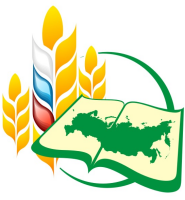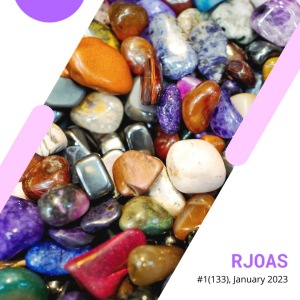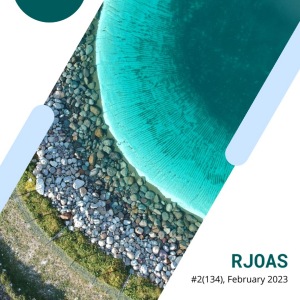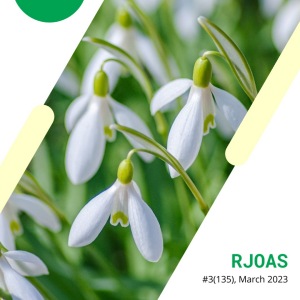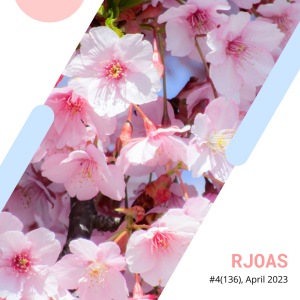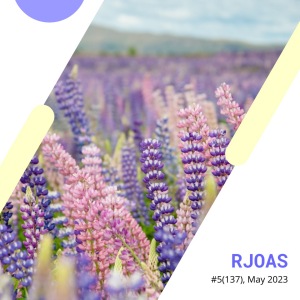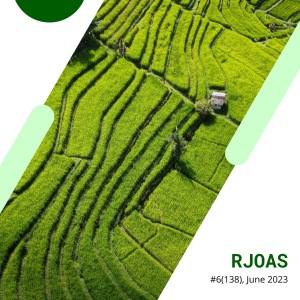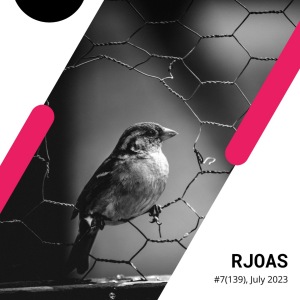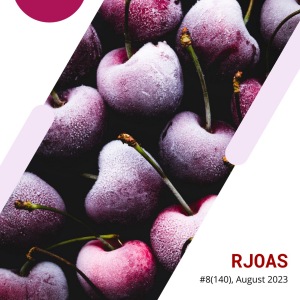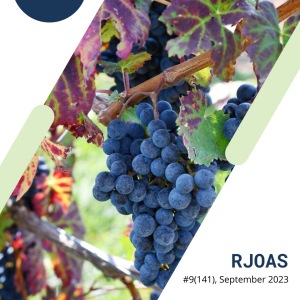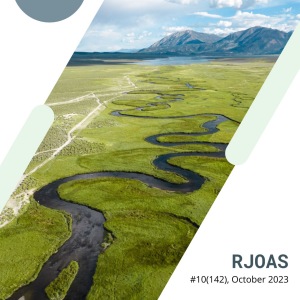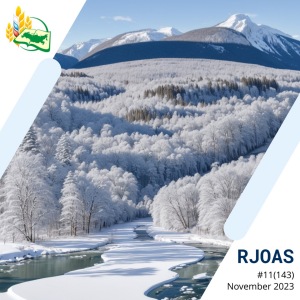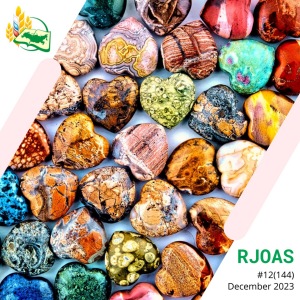ISSUE 3(15), March 2013 |
Pages 3-11
Title
ECONOMIC STATUS OF THE RUSSIAN MINORITY IN TAJIKISTAN
Author(s)
Aijaz A. Bandey, Farooq Ahmad Rather
Organization(s)
Centre of Central Asian Studies, University of Kashmir, India
Key Words
Russian; Central Asia; Tajikistan; Migration; Jobs; Employment; Economy; Government; Representation.
Abstract
From the 1980s onwards, there was a sharp economic decline in the entire Soviet Union including Central Asia. People in general were affected due to this economic decline; however, in case of the Slav minority in Central Asia including Tajikistan the outmigration of Russian, which started from the 1980s, affected them more than that of their Central Asian counterparts. After the disintegration of Soviet Union, the condition of the leftovers was further accentuated by the language policy, ethnicisation while recruitment in the public offices, etc. Besides this Tajikistan has been the poorest country in the post Soviet space, which in turn is adding to the economic hardships of the people in general and ethnic Russians of the country in particular.
CrossRef DOI
Pages 12-16
Title
MIGRATION AND CHANGING POOR DYNAMICS IN A VILLAGE: A CASE STUDY
Author(s)
Harasankar Adhikari
Organization(s)
Monihar Co.H. Society, India
Key Words
Urbanization; Migration; Village young; Landless labour.
Abstract
The urbanization has been significantly created wide scope of employment opportunities through manifold services sector. The mobility or migration of rural people has changed the social and economic condition of the landless labour of the rural area. In this case study migration of the village young of East Midnapore district of West Bengal who were from landless labour families with a little education has been noted. Their social and economic position had been remarkably changed within 3-5 years. They were capable to make their family healthy and wealthy through improved shelter, regular diet and creation of other properties.
CrossRef DOI
Pages 17-21
Title
AN ECONOMIC ANALYSIS OF THE DETERMINANTS OF ENTREPRENEURSHIP: THE CASE OF MASVINGO INFORMAL BUSINESSES
Author(s)
Clainos Chidoko
Organization(s)
Department of Economics, Great Zimbabwe University, Zimbabwe
Key Words
Informal sector; Entrepreneurship; Education level; Employment.
Abstract
In the past decade, Zimbabwe has been hit by its worst economic performance since its independence in 1980. Capacity utilization shrank to ten percent and unemployment rate was above eighty percent by 2008 as the private and public sector witnessed massive retrenchments. As a result many people are finding themselves engaging in informal businesses to make ends meet. However not all people have joined the informal sector as has been witnessed by the number of people who left the country in droves to neighbouring countries. It is against this background that this research conducted an economic analysis of the determinants of entrepreneurship in Masvingo urban with an emphasis on the informal businesses. The research targeted a sample of 100 informal businesses (30 from Rujeko Light industrial area, 40 from Mucheke Light industrial area and 30 from Masvingo Central Business District). The businesses included among others flea market operators, furniture manufacturers, suppliers and producers of agricultural products, and food vendors. The research found out that level of education, gender, age, marital status, number of dependants, type of subjects studied at secondary school and vocational training are the main determinants that influence the type of business that entrepreneur ventures into. The study recommends formal training for the participants, for the businesses to continue into existence since they fill in the gap that is left vacant by most formal enterprises.
CrossRef DOI
Pages 22-25
Title
SOME PROBLEMS OF MAINTENANCE AND REPAIR OF ANIMAL HUSBANDRY
Author(s)
L.I. Kovalev*,I.L. Kovalev**
Organization(s)
*Belarusian State Agrarian Technical University
**The Institute of System Research in Agro-industrial Complex of NAS of Belarus
Key Words
Animal husbandry; Specifications; Equipment; Technical service; Maintenance; Repair.
Abstract
The article raises a number of important issues and the current state of the material and the production base of technical service animal husbandry.
CrossRef DOI
Pages 26-30
Title
ADOPTION OF SMOKING CHOKOR FOR FISH PROCESSING IN KWARA STATE
Author(s)
J.A. Akangbe, Y. Bankole, B. Ajibola, S.B. Fakayode, J.O. Animashaun
Organization(s)
University of Ilorin, Nigeria
Key Words
Adoption; Value addition; Fish processing; Smoking chokor; Technology.
Abstract
This research investigated the adoption of smoking chokor among fish processors in Kwara state, Nigeria. The study made use of structured questionnaire along with interview schedule to a sample size of one hundred and seventy (170) processors randomly selected through a two-stage random sampling technique. The data were analyzed with descriptive and inferential statistics and the Regression Analysis. The results obtained through the analysis revealed that 43.7% of the respondents adopted the improved technology (smoking chokor). A higher percentage of respondents preferred the improved technology for the golden brown colour, fine texture, good smell and delicacy in the taste. The significant determinants of adoption include sex (female), income from fish processing activities (p<0.05) and the trust worthiness of the source of the technology (p<0.1). Perceived benefits associated with technology adoption include wastage reduction, employment generation and the reduction of smoke, while the technicalities associated with the use constitute a major constraint limiting its adoption. The study concludes that fish processors prefer the smoking chokor but its adoption is marred with various constraints. It therefore recommends the need for creating more awareness of the smoking chokor as well as reducing the perceived constraints limiting its adoption by training extension agents and other verifiable sources to educate farmers as they disseminate the technology.
CrossRef DOI
Pages 31-38
Title
CHANGES EFFECT OF SUGAR IMPORT TARIFF IN INDONESIA
Author(s)
Agnes Q. Pudjiastuti, Ratya Anindita, Nuhfil Hanani, David Kaluge
Organization(s)
University of Brawijaya, Indonesia
Key Words
Sugar; Import tariff; Domestic output; Export; Import; Household welfare, Computable general equilibrium.
Abstract
The purpose of this paper is to study the effect of sugar import tariffs changes since the tariff import is the only policy to increase the sugar domestic production. This analysis is performed using a CGE (computable general equilibrium) model of Indonesian economy in 2008. Results showed that the increases of sugar import tariff have some different conclusions. If sugar tariff import will rise to 41.6% and to 50%, the domestic output of sugar will increase about 1.89% and 3.77%; and household welfare would increase about 0.52 and 0.76%, respectively. But when the sugar import tariff is removed, domestic output of sugar and sugarcane have not changed, but the agricultural sector would reduce and income of all agents would decrease. Thus, the relevant tariff depends on the purpose of the government whether to increase domestic output and import or export of certain sectors, and the welfare of producers or consumers.
CrossRef DOI
Pages 39-53
Title
IRRIGATION WATER PRICING AND COST RECUPERATION FOR SUSTAINABILITY OF IRRIGATION PROJECTS IN NYANYADZI, ZIMBABWE
Author(s)
Ephraim Chifamba, Takupiwa Nyanga, Simbarashe Gukurume
Organization(s)
Faculty of Social Sciences, Great Zimbabwe University, Zimbabwe
Key Words
Water Cost Recovery; Sustainable Irrigation; Livelihoods; Household Food Security; Zimbabwe.
Abstract
Water pricing and recuperation of the costs of irrigation investment have been litigious issues for many decades in the dry area of Nyanyadzi because the community view irrigation as a development expenditure, financed by donors and the government for backward areas through lowering of food prices and reduction of tariffs. The soaring charges for irrigation water are questioned, as well as, the diminutive percentage of farmers who fundamentally recompense the charges. The failure to institute clear cost recuperation and water pricing methods has threatened the viability and sustainability of irrigation projects in the study area. The study used both qualitative and quantitative research methodologies. The study revealed that where the economy is usually subsidized, convalesce the cost of water delivery is much more complicated and difficult. In the case of establishing user fees, these should be estimated as a percentage of the "traditional user's capability for payment" derived from irrigation benefits (the net increase in farmers' income as a result of irrigation). Nyanyadzi has an opportunity in irrigation led development, if stakeholders address critical challenges in the planning, design, water delivery and maintenance of its irrigation systems. Since Nyanyadzi faces severe budgetary difficulties in financing irrigation projects, it is obligatory to consider the foundation on which irrigation projects operate and impose the principle of self sustaining. Sustainable methods of irrigation evaluation and collection of fees must be considered in light of Nyanyadzi's economic and technical environment. The research noted that water use efficiency is required in order to maximize the benefits farmers derive from the irrigation projects and extraordinarily high user fees should be avoided in the project development stages, where the payment capability is much less at the beginning than at the maturity stages of irrigation projects.
CrossRef DOI
Pages 54-62
Title
DETERMINANTS OF CHOICE OF CROP VARIETY AS CLIMATE CHANGE ADAPTATION OPTION IN ARID REGIONS OF ZIMBABWE
Author(s)
James Zivanomoyo*, Julius Mukarati**
Organization(s)
*Department of Economics, Great Zimbabwe University, Zimbabwe
**Department of Agricultural Economics, Midlands State University, Zimbabwe
Key Words
Climate change; Arid regions; Biotic; Drought resistant crops; Multinomial logit.
Abstract
Impacts of climate change in developing countries remain poorly understood because few studies have successfully analyses the overall impact of climate on developing country economies. Agricultural growth is widely viewed as an effective and most important way to reduce poverty in developing countries which are hardly hit by the adverse effects of climate change (Datt and Ravallion, 1996). Despite this knowledge the main challenge is how to increase agricultural productivity to improve household welfare and increase food security in these changing and challenging climatic conditions. This study used the multinomial logit model to analyse the determinants of farmers' choice of crop variety in the face of climate change. The estimation of the multinomial logit was done by using the sorghum variety options as dependent variable and where farmers grow other crop different from sorghum as the reference state. Results show that the key determinants of choosing crop variety are; the price of existing crop variety, level of education of farmers, the size of the farms, government policies and incentives and credit availability.
CrossRef DOI
Pages 63-67
Title
DETERMINANTS OF HERBICIDE UTILIZATION IN STRIGA HERMONTHICA CONTROL AMONG MAIZE FARMING HOUSEHOLDS IN GIWA LOCAL GOVERNMENT AREA OF KADUNA STATE, NIGERIA
Author(s)
Oyakhilomen Oyinbo, Mamman Kwagman Saleh, Grace Zibah Rekwot
Organization(s)
Ahmadu Bello University, Nigeria
Key Words
Striga; Herbicide; Maize; Farming; Weed.
Abstract
The study was carried out to determine the socioeconomic and institutional factors that influence the utilization of herbicide for the control of Striga in maize production. Structured questionnaire with the aid of personal interview was used to collect data from a sample size of eighty respondents selected purposively from Shika, Giwa, Yakawada and Galadimawa villages of the study area. Data collected were analyzed using descriptive statistics and OLS regression analysis. The result of the analysis showed that household size (P<0.1), household income (P<0.05) and educational level (P<0.01) are the socioeconomic variables significant in influencing herbicide utilization by maize farming households while membership of association (P<0.01) and extension contact (P<0.01) are the institutional variables significant in influencing herbicide utilization by maize farming households in the study area. The high significance of membership of association and extension contact implies that farmers associations and extension agents are very relevant in influencing farmers decision on weed control techniques through information dissemination about the techniques of weed control. It is therefore recommended that farmers associations and extension agents should be fully involved in disseminating improved techniques of weed control as they have been found to be very relevant in farmers utilization of herbicide as a technique of striga control.
CrossRef DOI
Pages 68-72
Title
AN EXPLORATION OF THE DISASTER-DEVELOPMENT INTERFACE: TOWARDS SUSTAINABLE DEVELOPMENT THROUGH DISASTER MANAGEMENT
Author(s)
Jacob Tagarirofa
Organization(s)
Department of Sociology, Great Zimbabwe University, Zimbabwe
Key Words
Disaster Management; Risk Management, Mitigation, Disaster Prevention, Technocratic Approach; Sustainable Development.
Abstract
The essay is an anatomy of the interface of disaster management and development, with the aim of drawing a framework for understanding how and why outright development strategies should mainstream disaster management as an elementary ingredient for sustainability. It accounts for why developing countries should consider disasters as a developmental issue insofar as they suffer a double tragedy, that of being "underdeveloped" and abhorrently vulnerable to disasters. The paper methodologically thrived on desktop research to find out and highlight multifarious case illustrations of the negative ramifications of disasters on development. The analysis proceeded within the theoretical lens of the structural and technocratic approaches to disaster management as conceptual framework. It was avowed that, indeed there is a convoluted relationship between disasters and development, and therefore was seen imperative to mainstream disaster risk management in development planning in order to ensure optimum development outcomes in the long run.
CrossRef DOI
Pages 73-78
Title
ON THE COMPARISON OF BAYESIAN INFORMATION CRITERION AND DRAPER'S INFORMATION CRITERION IN SELECTION OF AN ASYMMETRIC PRICE RELATIONSHIP: BOOTSTRAP SIMULATION RESULTS
Author(s)
Henry de-Graft Acquah*, Joseph Acquah**
Organization(s)
*Department of Agricultural Economics and Extension, University of Cape Coast, Ghana
**Department of Mathematics, University of Mines and Technology, Ghana
Key Words
Bayesian Information Criteria (BIC); Draper's Information Criteria (DIC); Model Selection; Bootstrap; Asymmetric Price Transmission Model.
Abstract
Alternative formulations of the Bayesian Information Criteria provide a basis for choosing between competing methods for detecting price asymmetry. However, very little is understood about their performance in the asymmetric price transmission modelling framework. In addressing this issue, this paper introduces and applies parametric bootstrap techniques to evaluate the ability of Bayesian Information Criteria (BIC) and Draper's Information Criteria (DIC) in discriminating between alternative asymmetric price transmission models under various error and sample size conditions. The results of the bootstrap simulations indicate that model selection performance depends on bootstrap sample size and the amount of noise in the data generating process. The Bayesian criterion clearly identifies the true asymmetric model out of different competing models in the presence of bootstrap samples. Draper's Information Criteria (DIC; Draper, 1995) outperforms BIC at either larger bootstrap sample size or lower noise level.
CrossRef DOI













